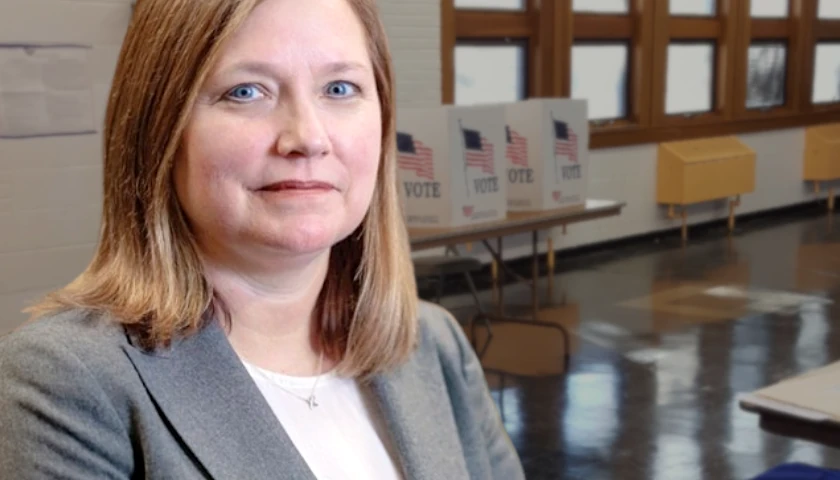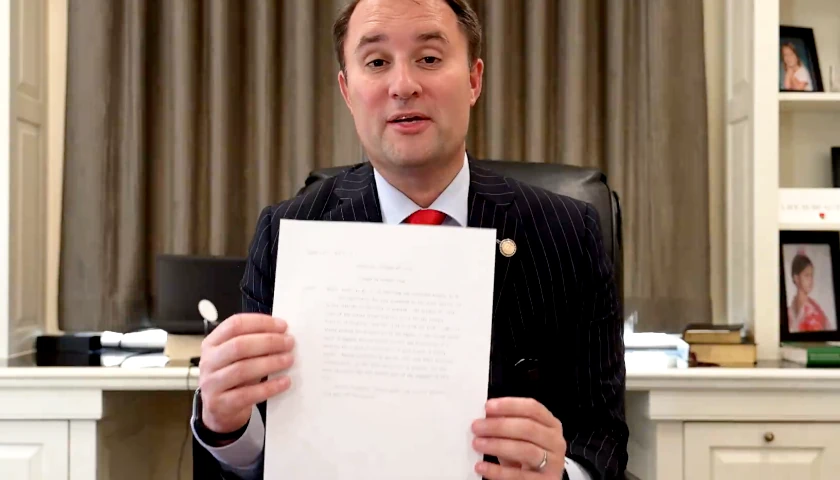A new working draft of a Virginia Senate redistricting map is highlighting the question of what creating a fair map means. The working map was hammered out on Saturday in a closed-door meeting between the Democratic and Republican co-chairs, Democratic and Republican legal teams, and Democratic and Republican map-drawers.
The draft appears to advantage Republicans when compared to 2017 gubernatorial election results. Under the proposal, now-Governor Ralph Northam would have won in 21 districts and GOP candidate Ed Gillespie would have taken 19 — despite the fact that Northam overwhelmed Gillespie 53.90 percent to 44.97 percent.
Virginia Public Access Project analysis of the map, based on 2016 presidential election results, shows a decrease from current 15 strong Democratic districts to 13. Republicans pick up a strong district, from 11 under current maps to 12 strong Republican districts under the proposal. Overall, Democrats would retain their current 21-19 majority.
Since the map was released over the weekend, analysts, Democratic consultants, some commission members, and public commenters have expressed alarm, challenging the fairness of the proposed map.
“The map’s definitely a Republican gerrymander. Nothing extreme like in Ohio or Texas, but definitely a slight to moderate Republican gerrymander,” elections forecaster Chaz Nuttycombe told The Virginia Star.
He said a map that better reflected Virginia’s current voting demographics would give Northam 23 or 24 seats when comparing the map to the 2017 results.
“I think that the Republican consultant is far smarter than the Democratic consultant that’s helping draw these maps. The Republican is running circles around him,” Nuttycombe said.
In the Monday commission meeting Delegate Marcus Simon (D-Fairfax) said, “At some point, whether it’s now or at the end, we kind of need to come to some consensus as a group about what does fairness look like.”
He said, “We heard from [The Princeton Gerrymandering Group] last week, based on their at least preliminary analysis, it looked like we ought to have a senate that would have 24 to 28 Democratic-leaning districts. So far, we’re starting at 19. So that means we’ve got to, as we go through this process, be looking for five or six or seven more districts.”
Republicans weren’t as concerned, and argued that if the non-partisan criteria were followed, the results would be fair without considering past election results.
“In terms of unduly favoring one party or the other or disfavoring one party or the other, has the commission adhered to politically neutral criteria in drawing district lines? Or has it engaged in efforts to help out one party or the other,” Republican lawyer Christopher Bartolomucci told the commission. “I don’t see anything in the language that would indicate that past election results need to be replicated in the way that districts are drawn going forward.”
Delegate Glenn Davis (R-Virginia Beach), not a commissioner, told The Star, “[The people that drew the maps] did not utilize any voting demographics when drawing the lines, which is the way it should be. When Marcus Simon asks to see what the voting results would be under the new lines in a prior election it’s obvious that he only cares about gerrymandering. The only reason anyone, any incumbent asks to see past election history under these new lines is because they care about, ‘Do I still keep the majority or not?'”
Davis said, “I think [the Senate map] is a fair starting place because it’s compact. And now they are talking about communities of interest, which is a very fair discussion, and I think they’re talking about some some minor adjustments here and there over communities of interest which makes complete sense, there has been discussion about majority-minority districts that they want to maintain and that’s a fair discussion as long as we don’t get into packing districts.”
In a marathon Monday meeting, map drawers emphasized that the map wasn’t a consensus between the partisan teams, but just a starting place for the commission’s discussion.
The commission began analyzing the points of disagreement between the two teams, with a goal to have an approved consensus map by the end of the meeting, which was not over by press time.
While discussing incumbent pairing, map-drawers also hinted at pending Senate Democratic retirements.
“You’ll see a couple of areas in northern Virginia where incumbents appear to be paired but both of those areas are where one of the paired incumbents has announced that they’ll be retiring,” Democratic map-drawer Ken Strasma said.
Senator Jennifer Boysko (D-Fairfax) and Senate Finance Chair Janet Howell (D-Fairfax) were placed in one district, while Senator Dave Marsden (D-Fairfax) and Senate Majority Leader Dick Saslaw (D-Fairfax) were paired in a neighboring district.
Overall, the issue of a perceived Republican or Democratic gerrymander is a serious problem that could lead to some members of the commission voting against the final maps. If either the commission or the General Assembly fail to pass the maps, the Virginia Supreme Court will draw the maps.
“I think at this point Democrats have to wonder whether they’d be better off going to state supreme court than letting the commission finish its job at this rate,” Nuttycombe said. “I really doubt that the Dem commissioners would want to sign off on this.”
– – –
Eric Burk is a reporter at The Virginia Star and The Star News Network. Email tips to [email protected].
Photo “Capitol of the Commonwealth of Virginia” by Ron Cogswell. CC BY 2.0.








